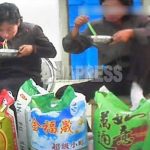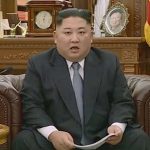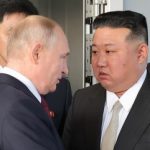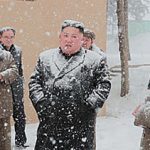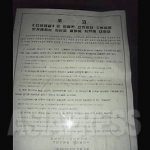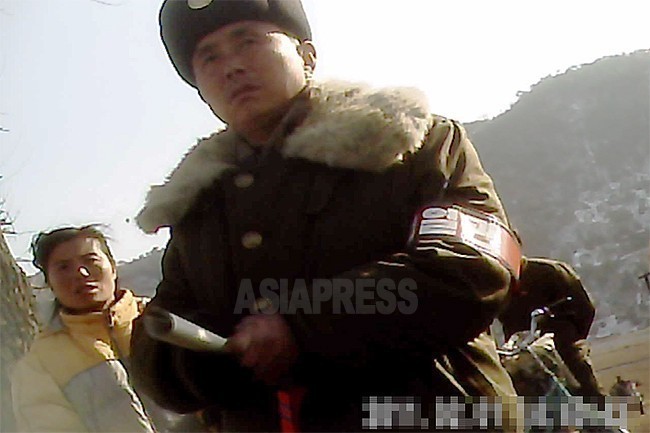
◆ A hotbed of human rights abuse
A top-secret document ratified by Kim Jong-un and recently obtained by ASIAPRESS provides insight into North Korean government efforts to prevent runaways, suicides and deaths in the country’s detention facilities. (ISHIMARU Jiro)
In the wake of the outbreak of COVID-19 in January 2020, North Korea implemented excessive measures to combat the virus, leading to a downturn in its economy. The government’s social control measures also tightened, leading to cases where the Ministry of Social Security, the country’s national police service, began arresting or detaining people for trivial matters, or even raiding houses without warrants.
While there have been many reported cases of deaths occurring in various detention facilities thus far, the document recently obtained by ASIAPRESS includes mention that the national police service conducted a survey of runaways, suicides, and deaths in the facilities and that this survey was reported to Kim Jong-un, who signed off on response measures.
◆ The content of the top-secret document
The document is entitled, “Ratifications by Respected Supreme Leader Comrade Kim Jong-un on November 20, 2022 / Ratifications Regarding Waiting Rooms, Detention Centers, and Detainment Facilities Operated by Police Agencies.”
The following is a summary of the key points of the document. Areas marked with parenthesis are those added by the editor.
On November 20, 2022, the Respected Supreme Commander Comrade ratified measures to comprehensively investigate the situations in waiting rooms, detention centers, and detainment facilities and thoroughly implement measures to eliminate runaways, suicides, and deaths, and for managers to be severely punished when their failure to manage criminals leads to runaways, suicides, and deaths.
Based on the content of the document, when deaths, suicides and runaway incidents became a problem in police agency detention centers, the government appears to have conducted a survey, considered measures to deal with the problem, and submitted this information to Kim Jong-un for his ratification.
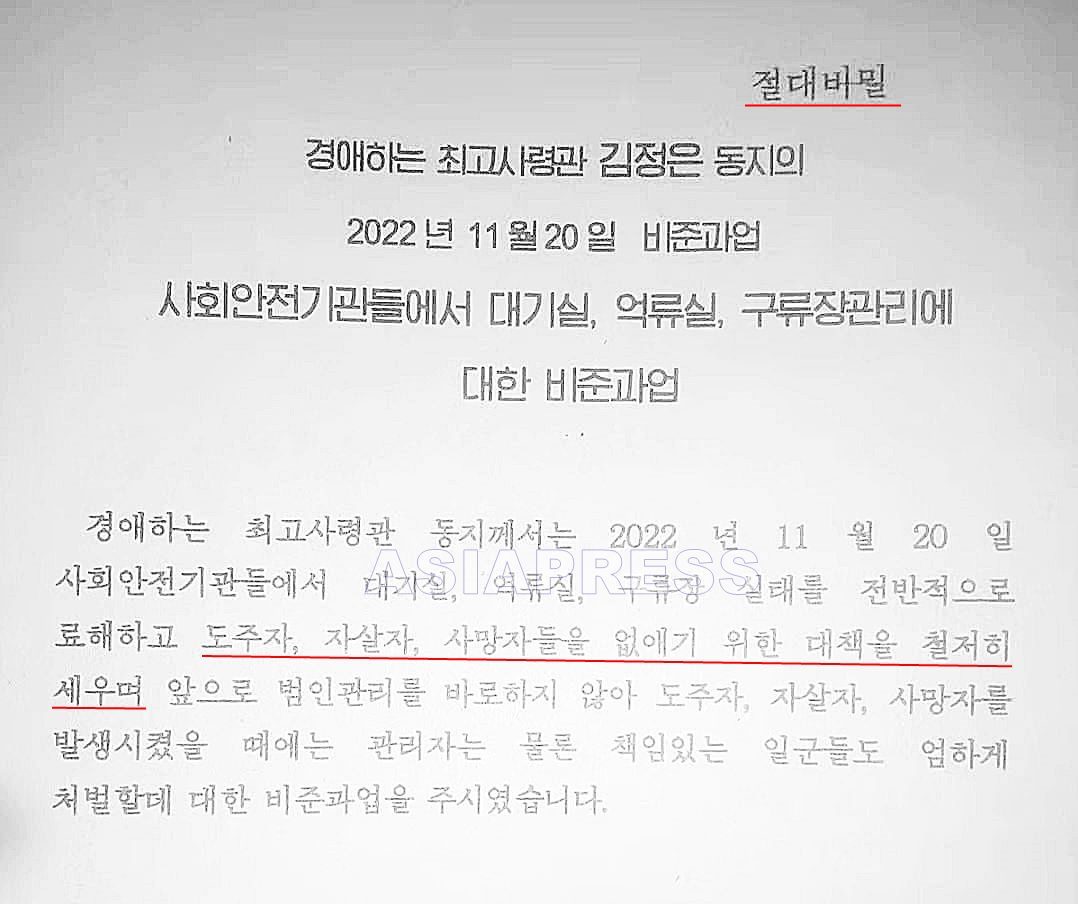
◆ Violence and torture commonplace in detention centers
The document provides the following explanations about the detention facilities.
〇 Waiting Rooms
Waiting rooms are detention facilities that hold suspects who have not yet been arrested for questioning. If officials believe a suspect needs to be charged with a crime, they can be arrested and investigated.
According to a reporting partner in the northern part of the country in December, a mother and son were detained in a “waiting room” for one night after being suspected of trying to cross over into China. The mother and son had, in fact, been heading to an acupuncturist for medical treatment for the son after 6 PM, which was past the start of the area’s nighttime curfew.
A defector in South Korea told ASIAPRESS that, “Whether someone is to be arrested or not is decided during an investigation in the waiting room, so people try anyway they can to escape it, through bribes or through people they know. Waiting room officials also perpetrate severe violence and torture to force people to admit they are guilty of a crime. There have been many cases where people have committed suicide or swallowed buttons or spoons to get out of the waiting rooms, which has led the authorities to post guards in the rooms on a 24-hour basis.”
〇 Holding Cells
Holding cells house suspects for a short period after their arrest and until a decision has been made on how to deal with them legally. The Ministry of State Security also uses detention centers.
〇 Detainment Centers
Detainment centers are where people waiting for judgements by a court are held for additional interrogation. The centers are similar to those in South Korea and Japan, but are located in police offices. Family members can meet with suspects and send in required items. Suspects are detained in these facilities until they are transported to prisons or forced labor brigades.
※ Forced labor brigade: A "forced labor brigade” is a "short-term forced labor camp" where those who are deemed to have disturbed the social order, disobeyed the authorities, or committed minor crimes are detained without judicial procedures and sentenced to forced labor for up to one year. These camps are in cities and counties throughout the country and are managed by the security bureau (police).
※ ASIAPRESS communicates with its reporting partners through Chinese cell phones smuggled into North Korea.
- Facing an extreme cold snap, North Koreans are in the middle of a terrible war with the cold ISHIMARU Jiro
- Recently obtained “confidential document” signed off by Kim Jong-un reports on a gruesome incident involving a shock brigade
- <Confidential Document> With the collapse of the medical system, Kim Jong-un orders crackdown on home remedies to treat illnesses…Why?
- <Inside N. Korea> The country’s medical system continues its freefall into collapse, with hospitals sending patients back home due to lack of heating
- <Inside N. Korea>Why are food prices skyrocketing at the start of the new year? Anxiety over food shortages leads to hoarding and even people wandering around after falling into financial ruin

